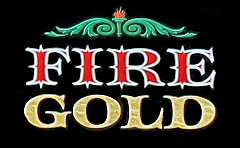
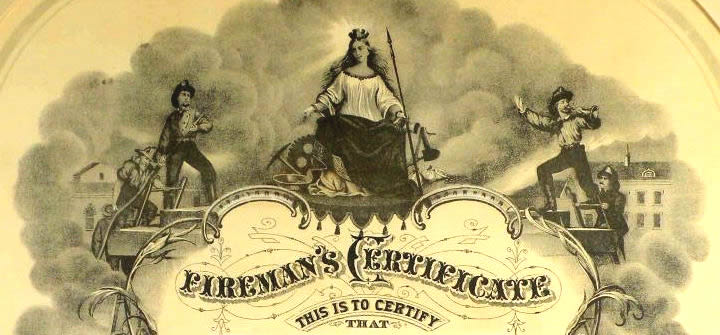

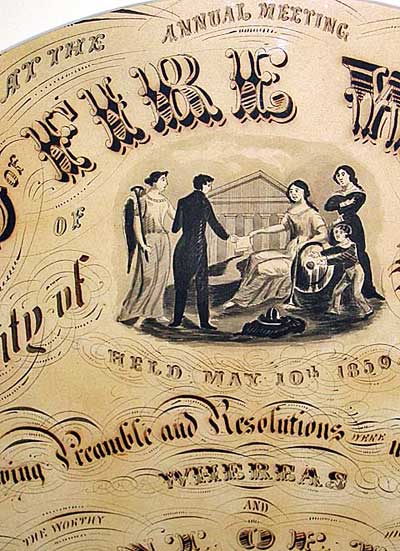


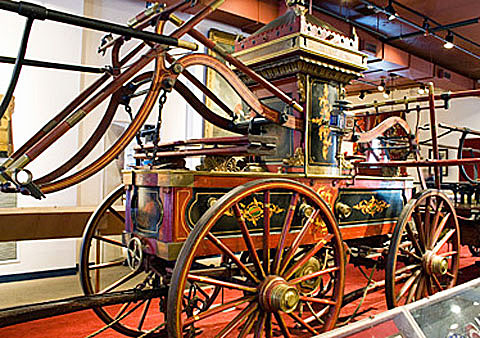
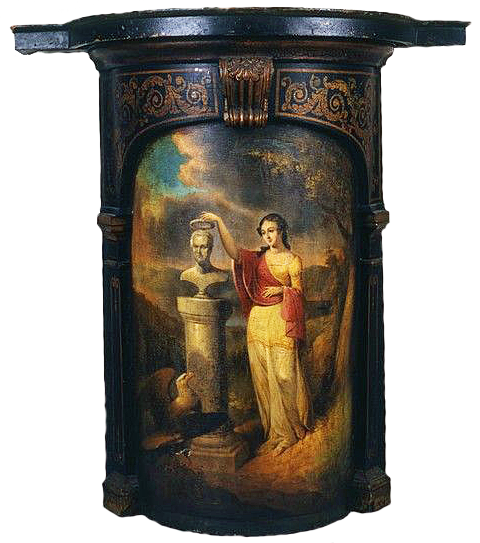
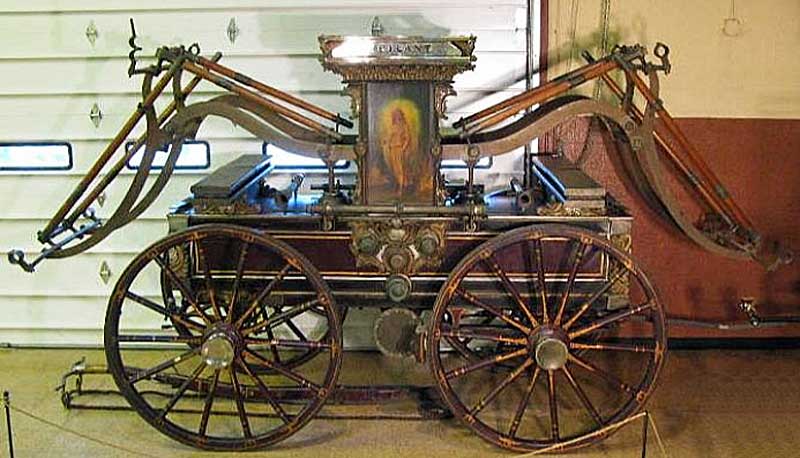
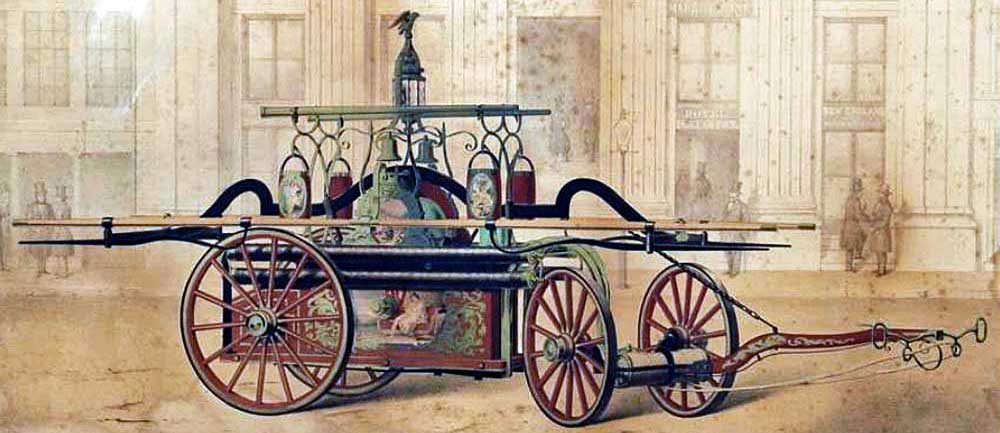
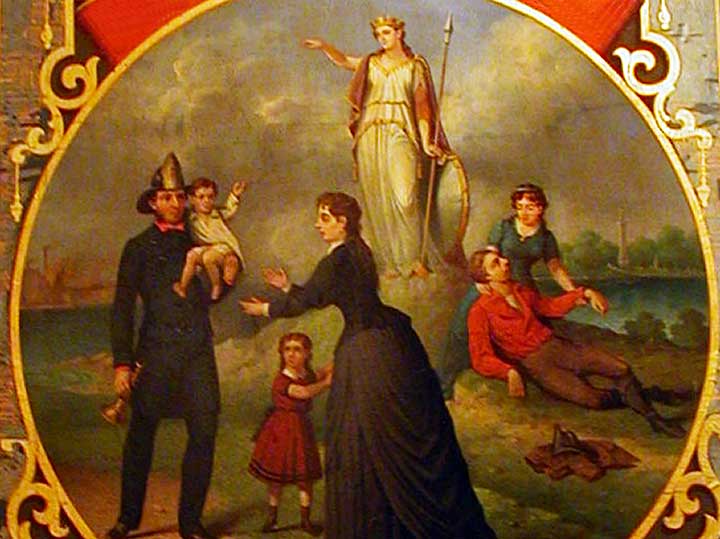

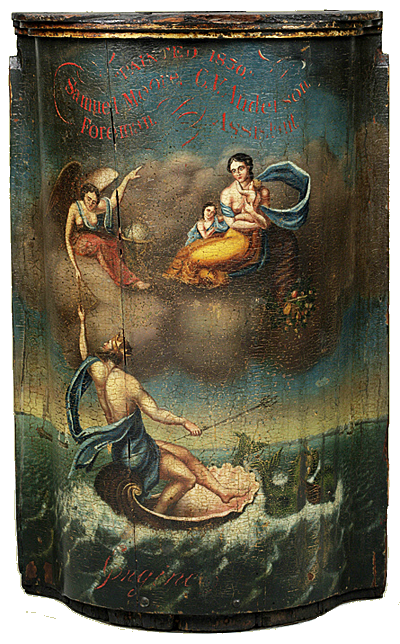


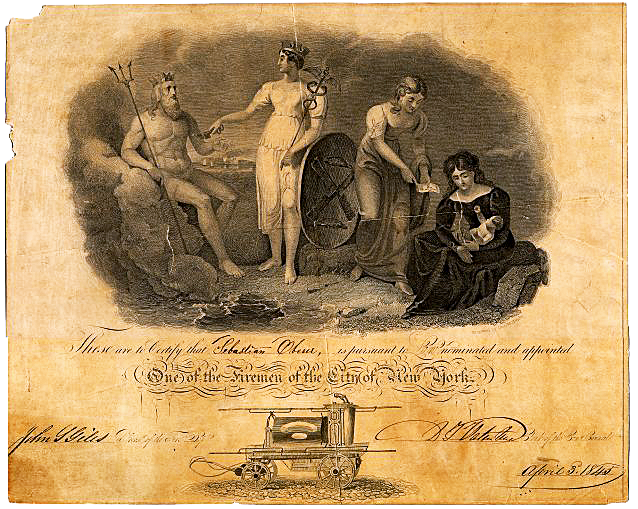
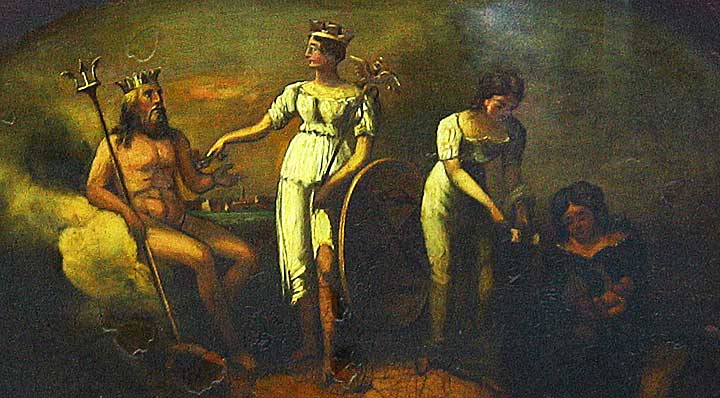
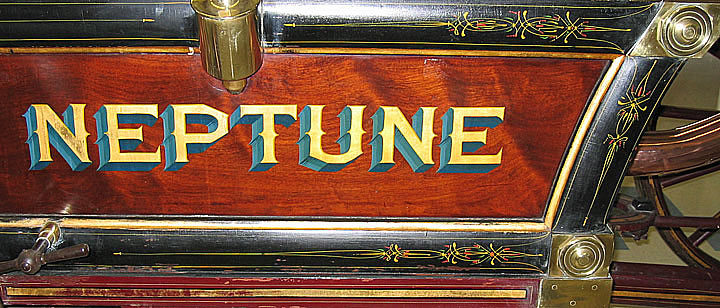
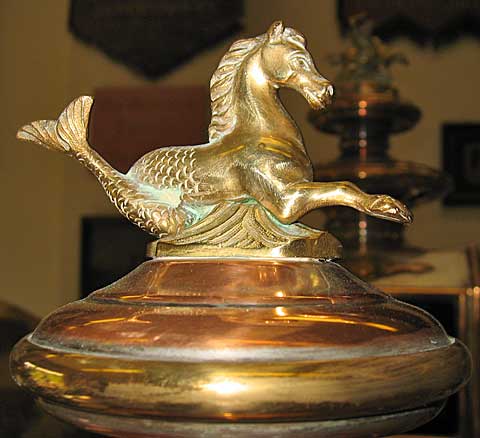
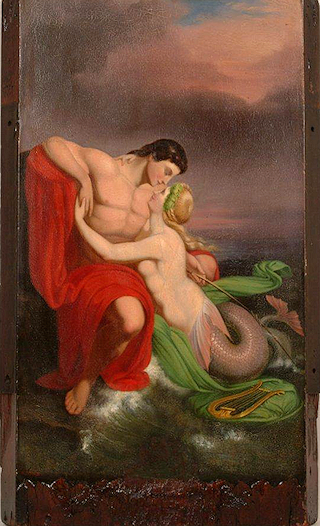
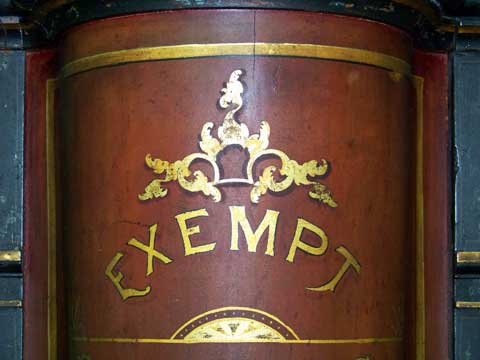

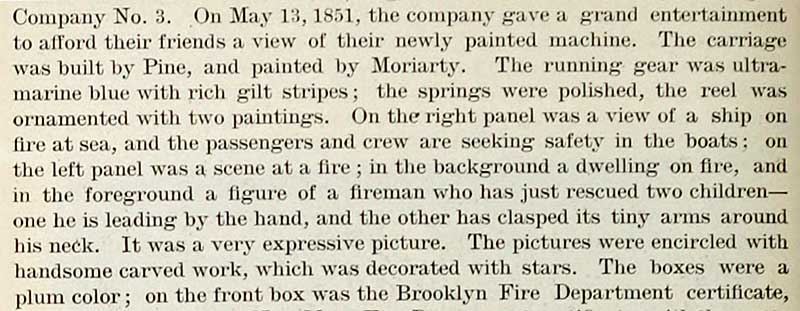

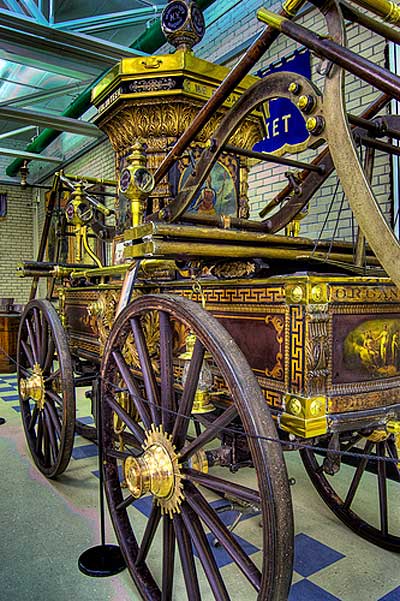

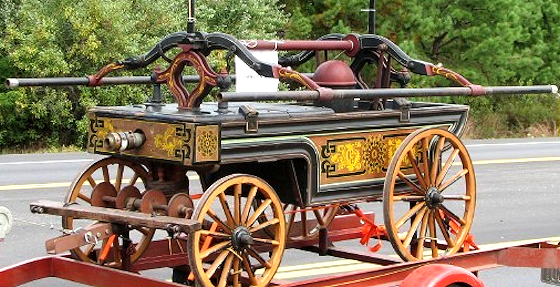
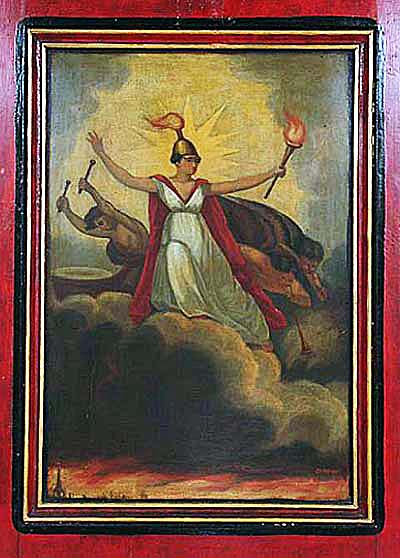
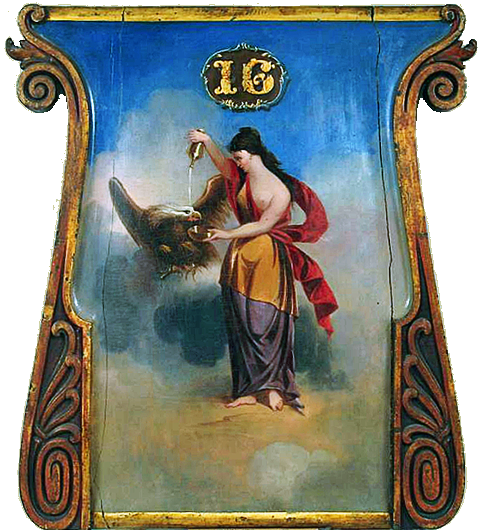
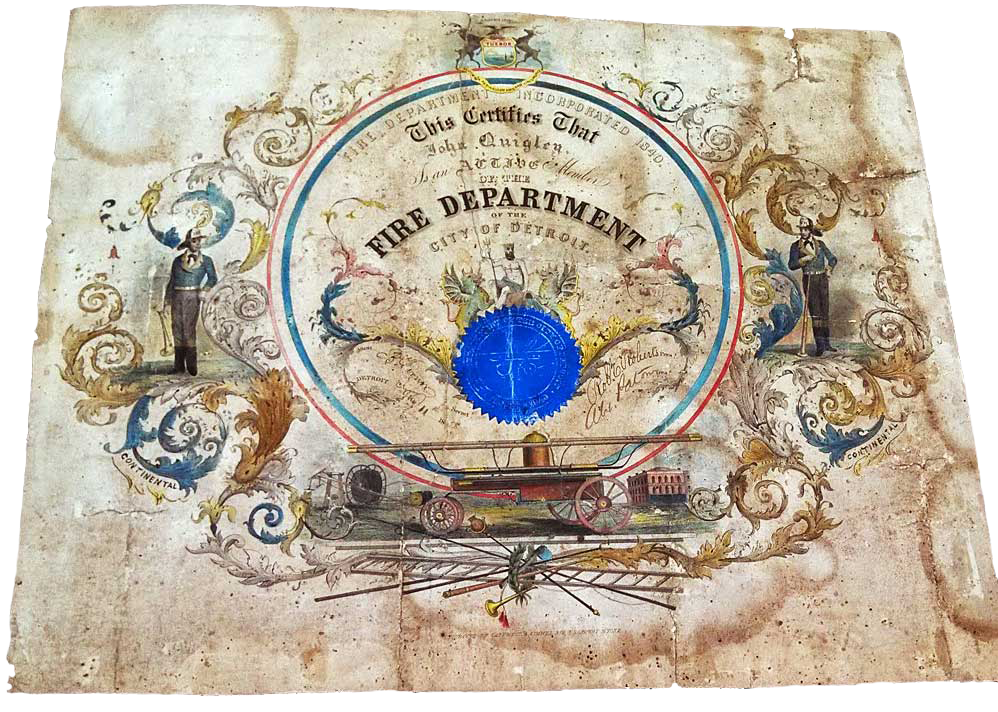
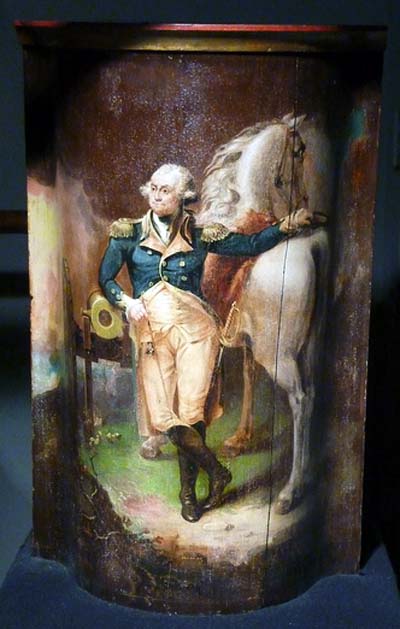


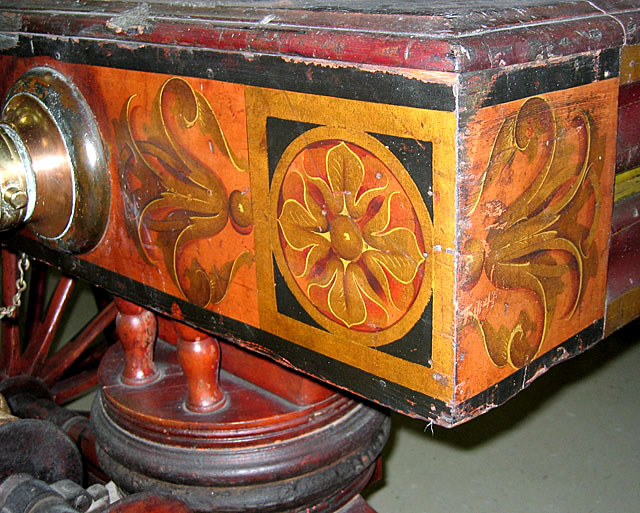
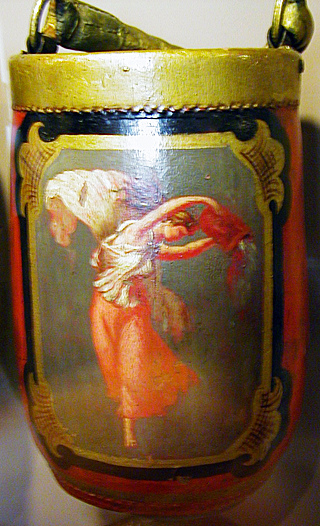
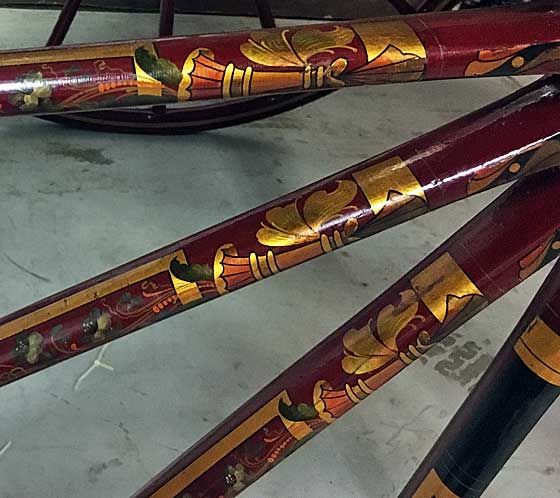
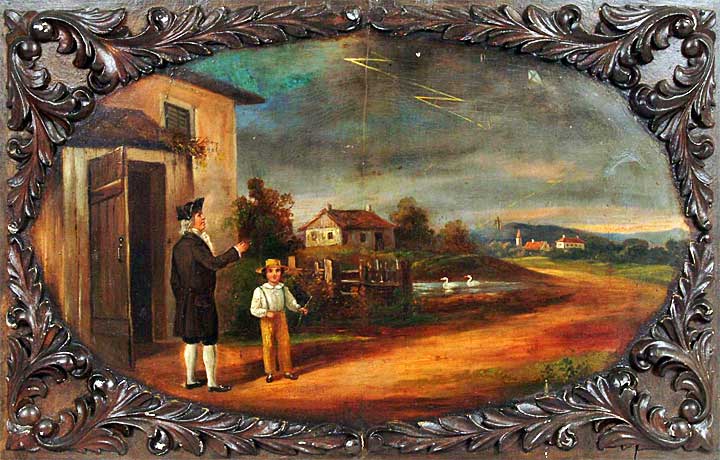
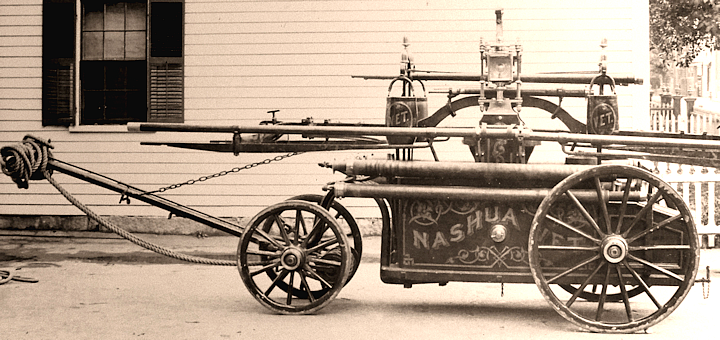
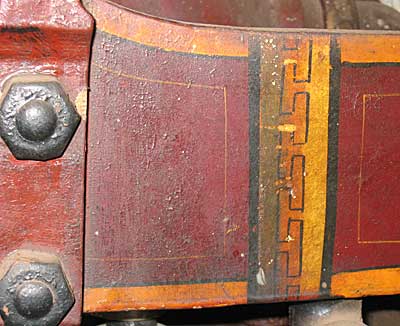

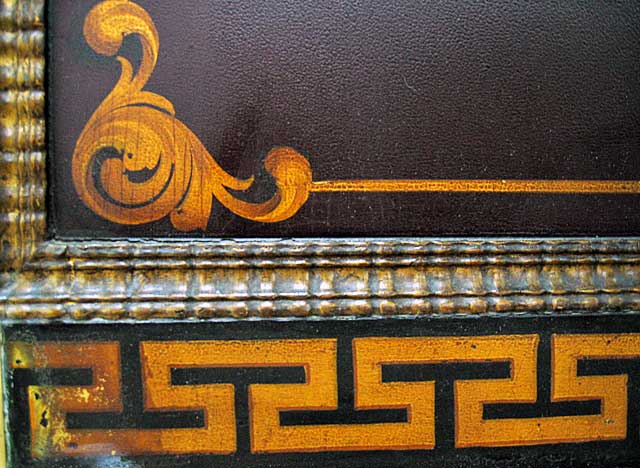
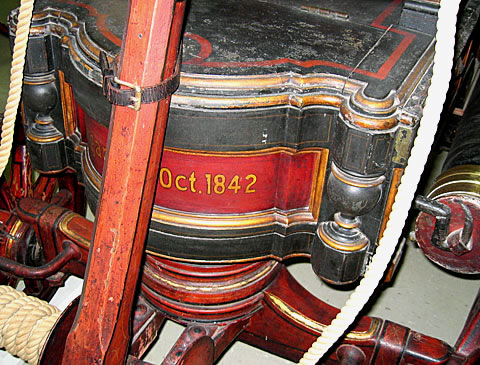


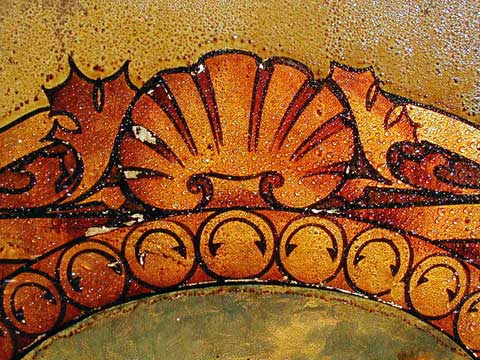

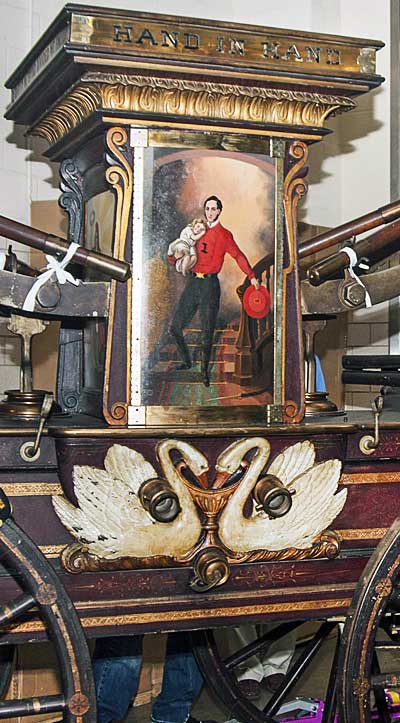

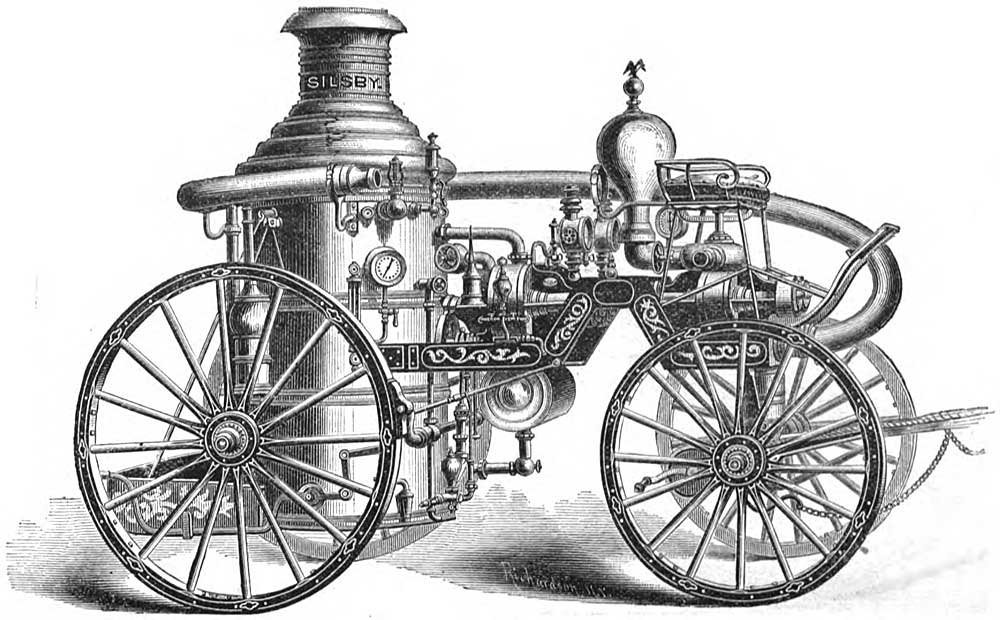
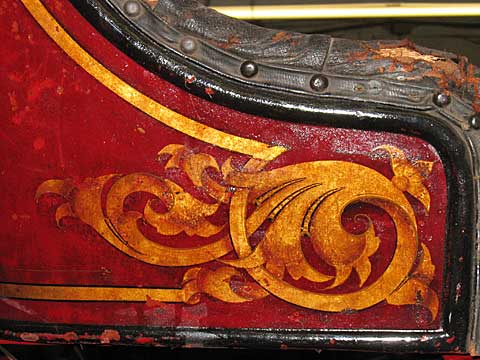
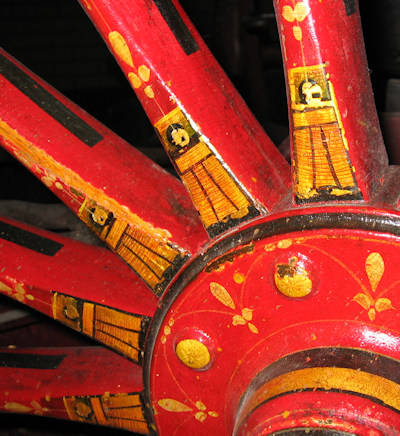
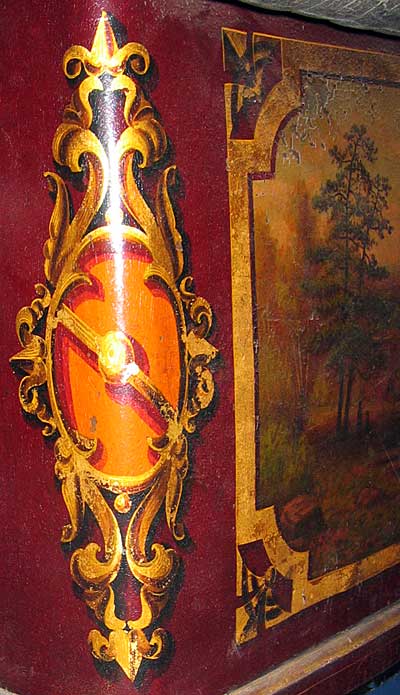
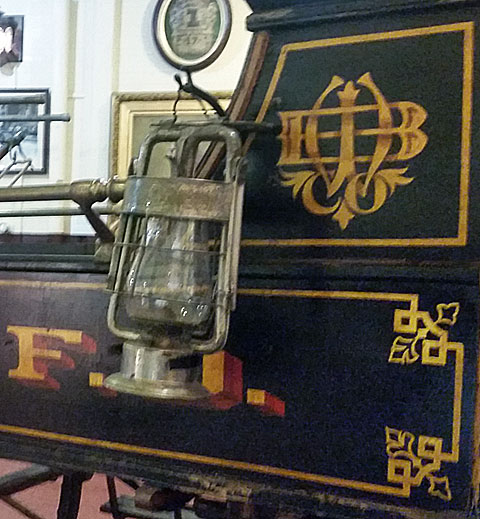

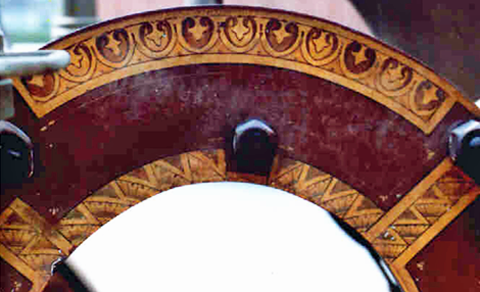
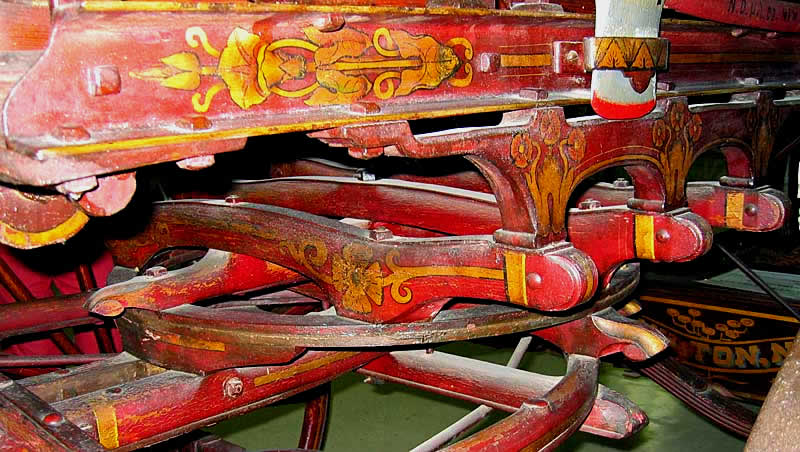

Ambulances entered the fire service after the Civil War. Fire company members volunteered for the War in great numbers. Many had never seen an ambulance before. Upon returning, fire companies added an ambulance to their fire house. These fire company ambulances were decorated fancy, just like the engines and hose carriages. In the photo below, a hose carriage is being used as a funeral caisson.
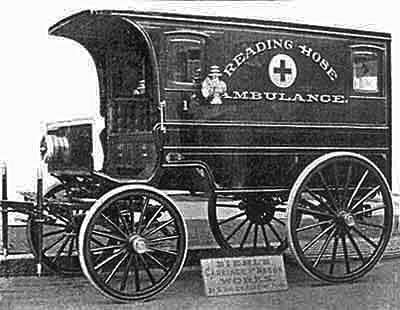
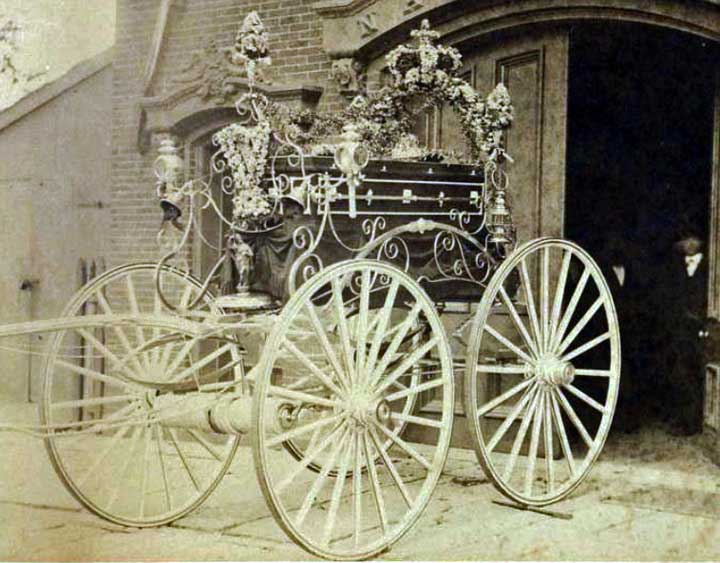
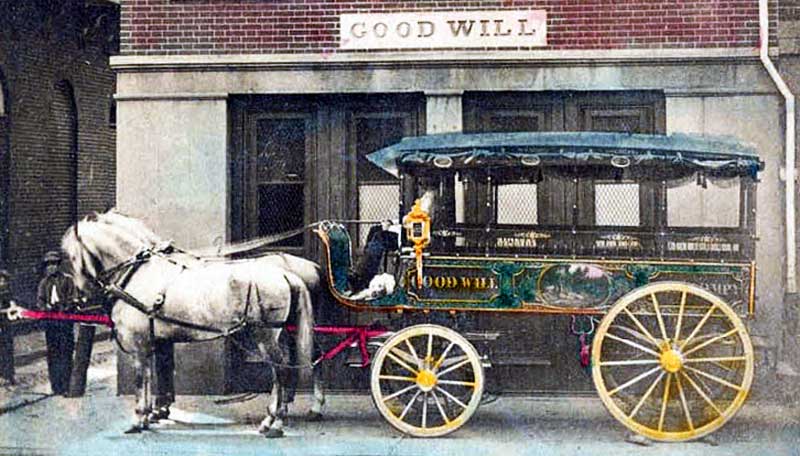
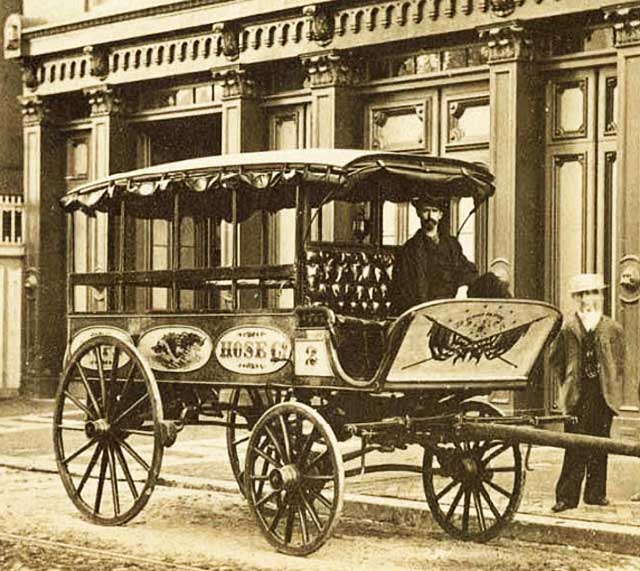


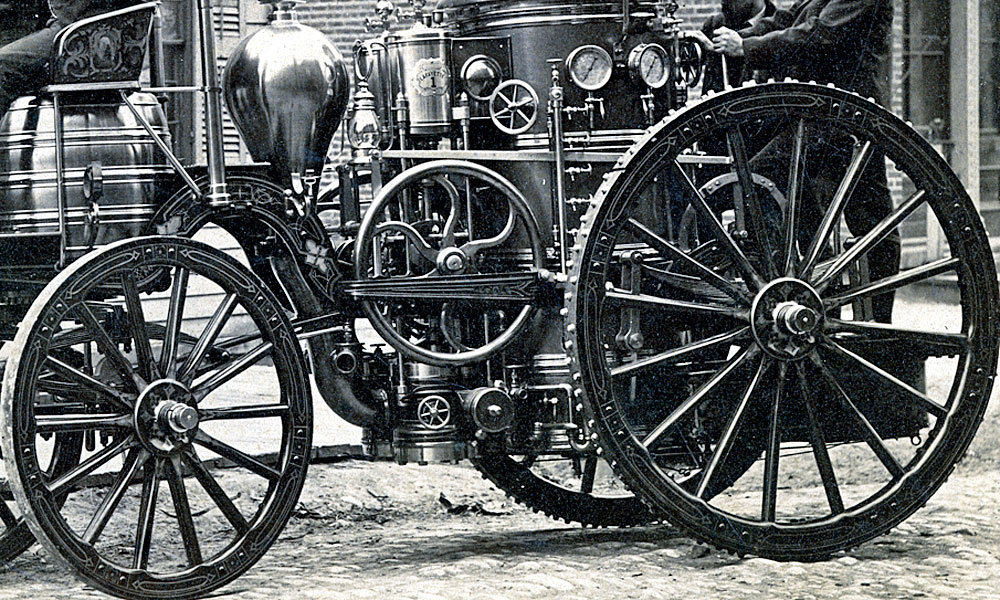
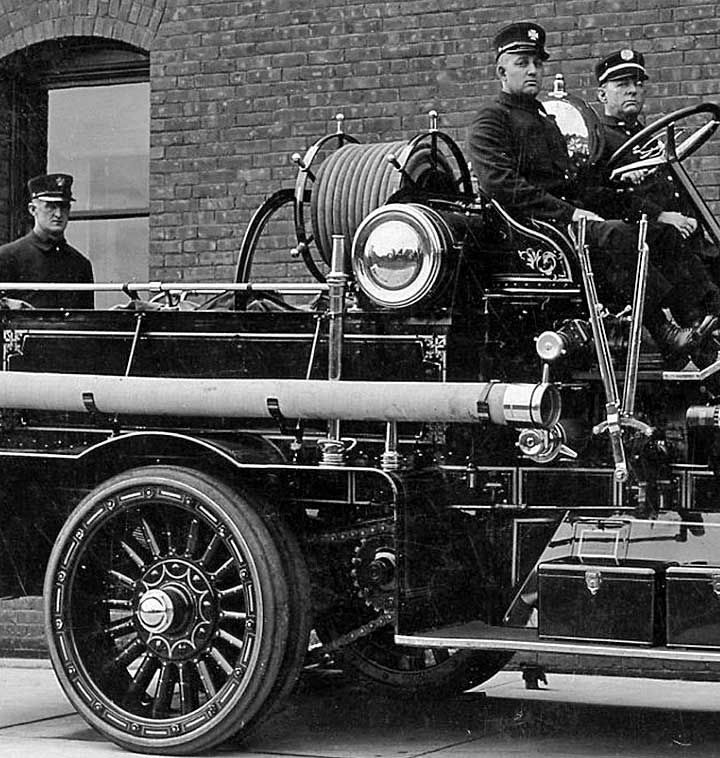


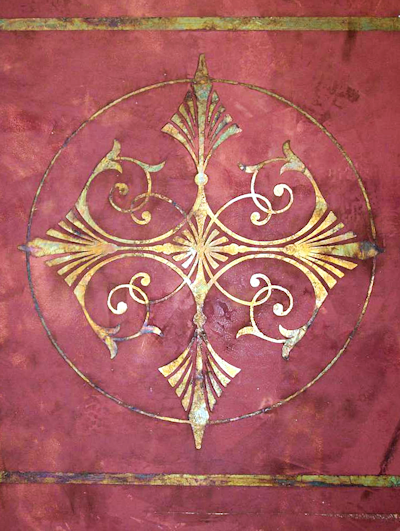

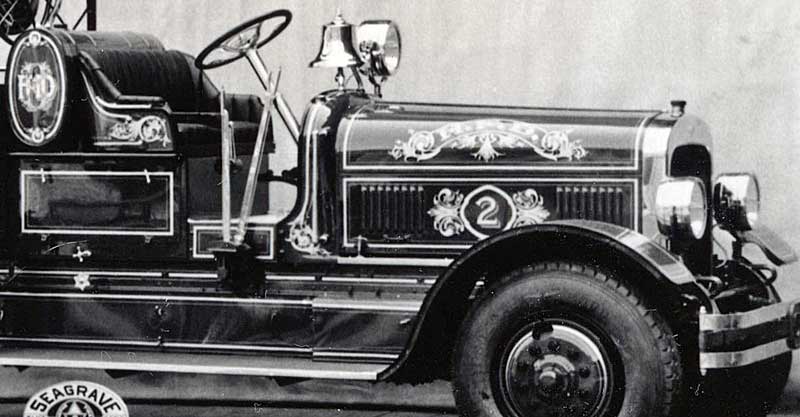


The American stage coach was built and decorated to resemble European royal coaches. Some of the painters that decorated this Abbot & Downing coach also worked for the Amoskeag Mfg. Co., gilding locomotives and steam fire engines. The same style of heavy gold scroll work with asphaltum shading was used on all these types of vehicles.
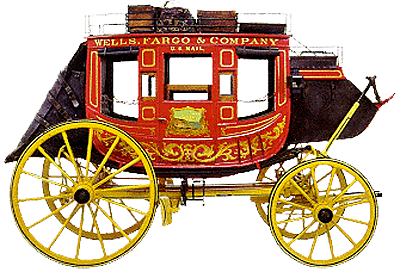
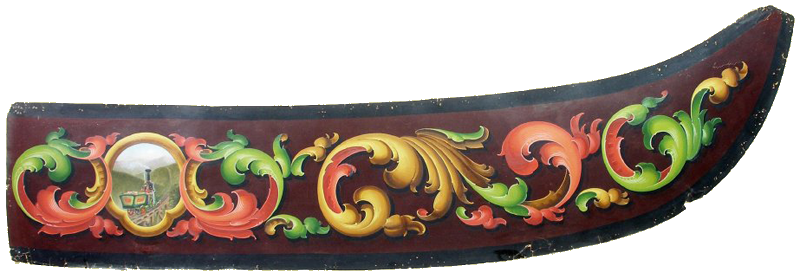
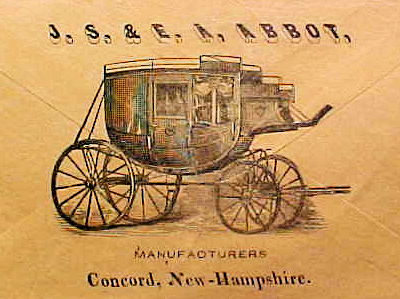

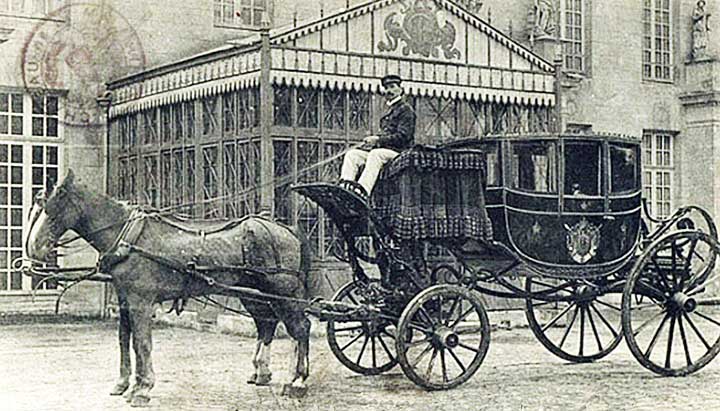
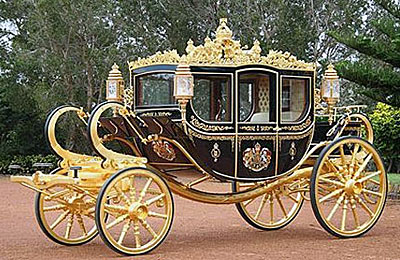
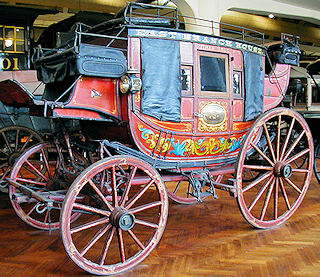
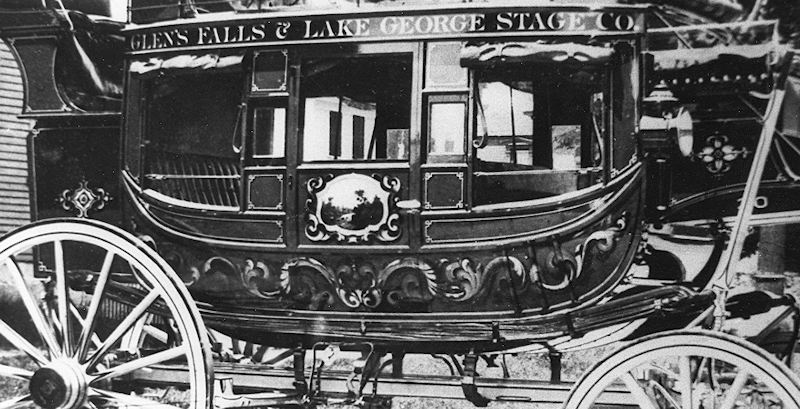
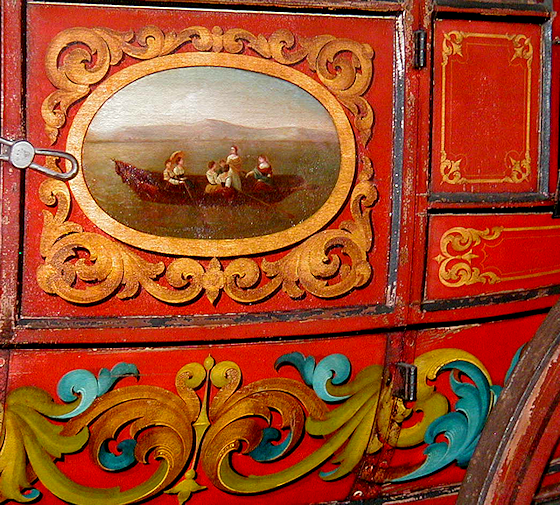


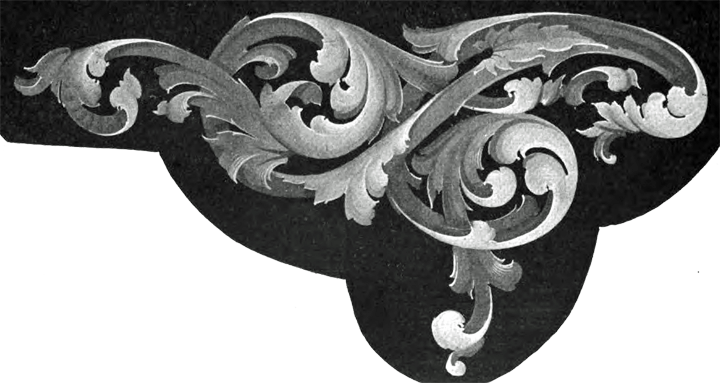
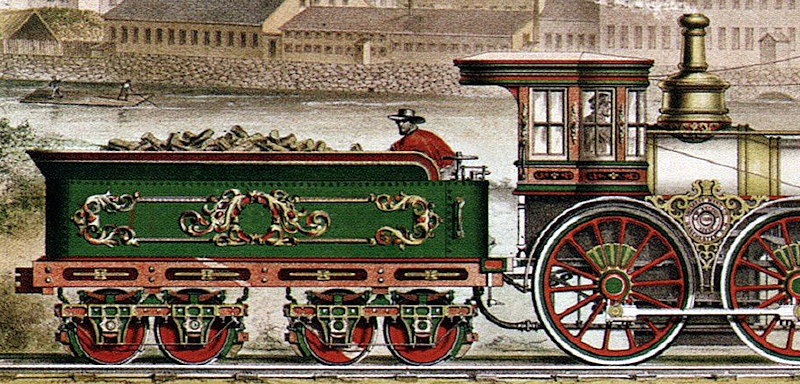


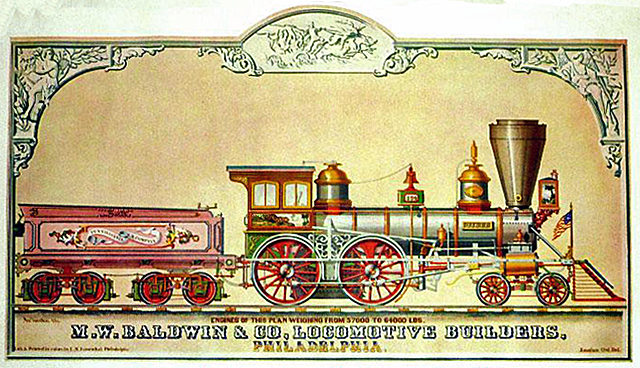
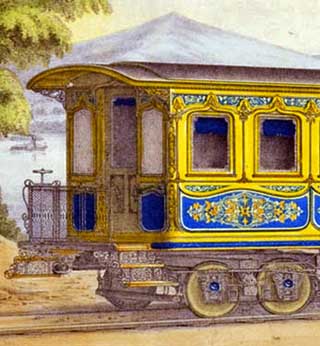

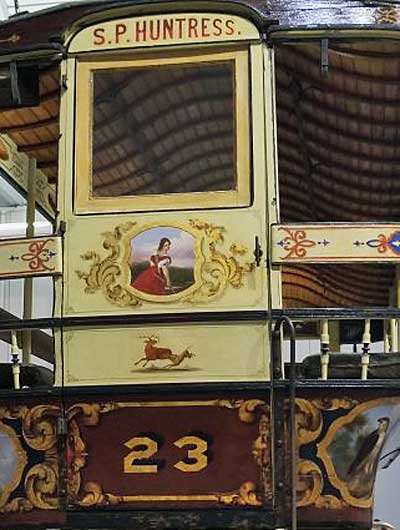
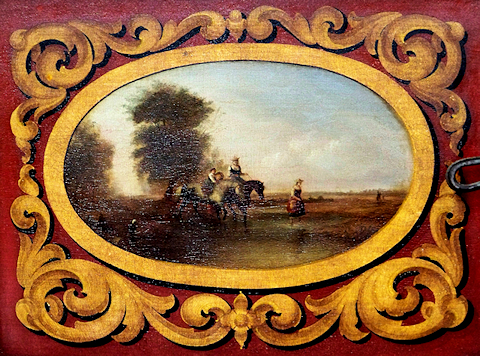
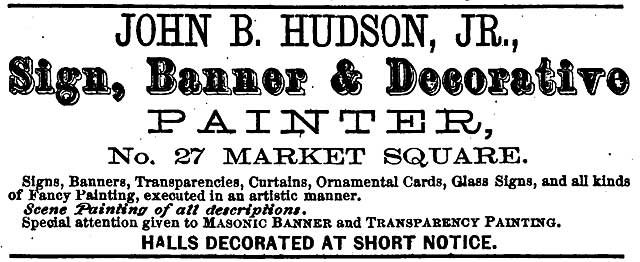

The first painted fire engine decoration I have heard of, was done in 1796. The New York City Fire Co. No. 15 had a wreath of roses painted on the side and back panels of their engine. The public called the engine the "Wreath of Roses" and that name was added to the engine.
Below is an antique model of an early engine, showing the style. Still life paintings of flowers were very popular in Europe in the 17th and 18th centuries. Small paintings were imported to the colonies and influenced early American folk painters. There were pattern books available that an artisan could copy or draw inspiration from. Decorative flowers were painted on furniture, tinware, walls, floor-cloths, carriages and many other surfaces.

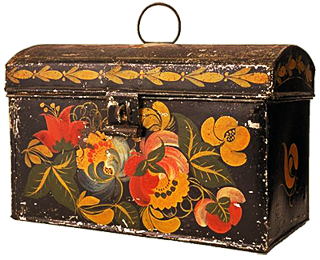
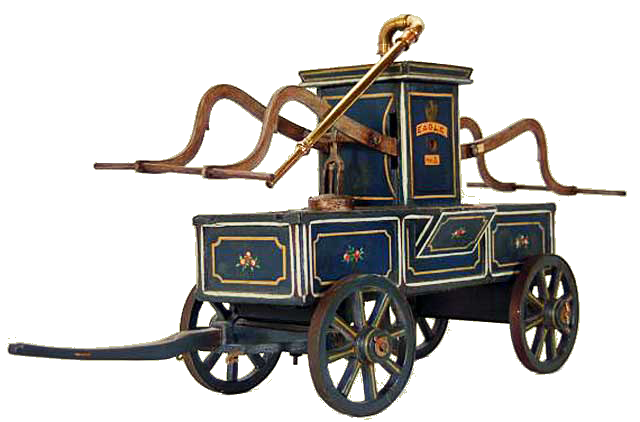
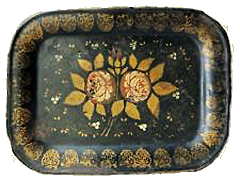
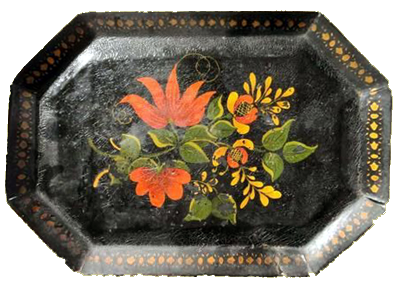
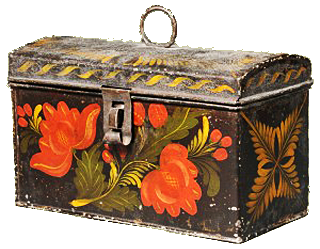



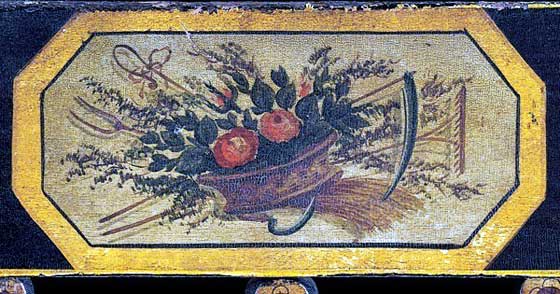
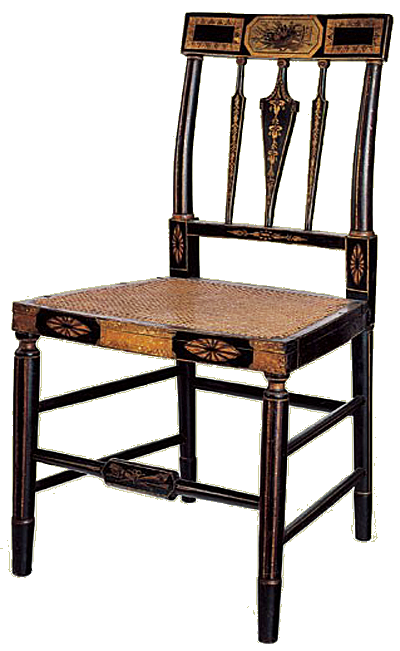
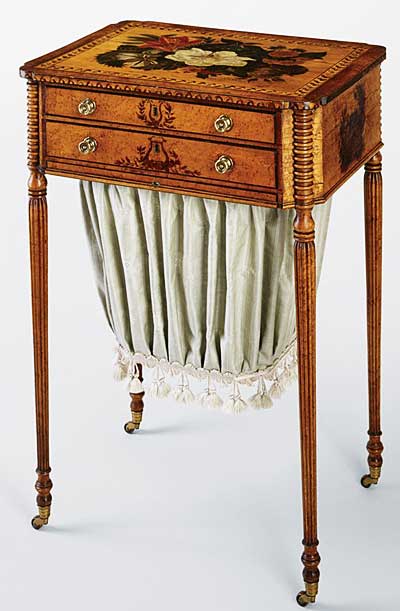
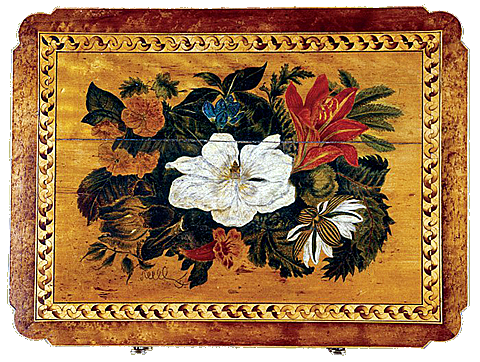


The majority of the fire engines I have seen in museums have been repainted. An engine from 1830 could have been repainted fifty years later and still have an impressive 130 year old paint job. The early hand engine shown above has decals that were not invented at the time it was built. Wheels with fancy stripes and lines came standard from most fire engine manufacturers. Gold leaf stripes and scrolls became a tradition that continues today with independent gilders customizing new engines.
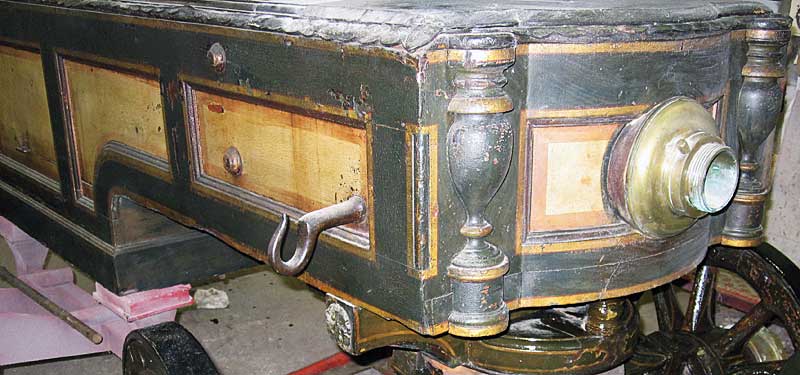
This engine was once a bright vermilion red. It shows through in this repaint from before the Civil War. Any vehicle paint job from before 1900 will show some cracking of the varnish surface.
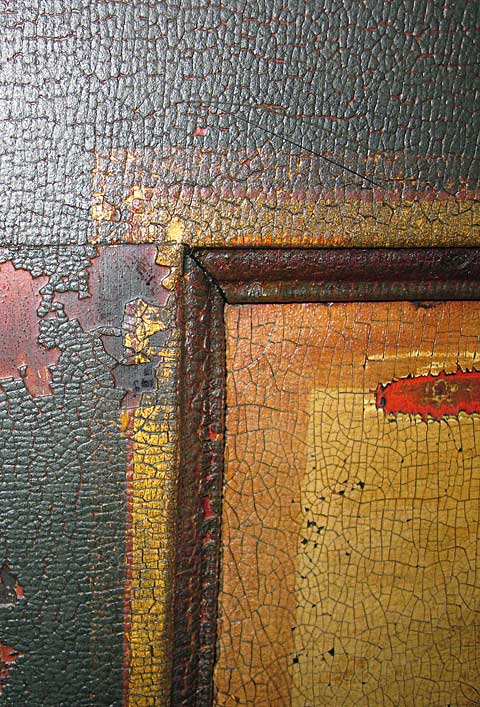

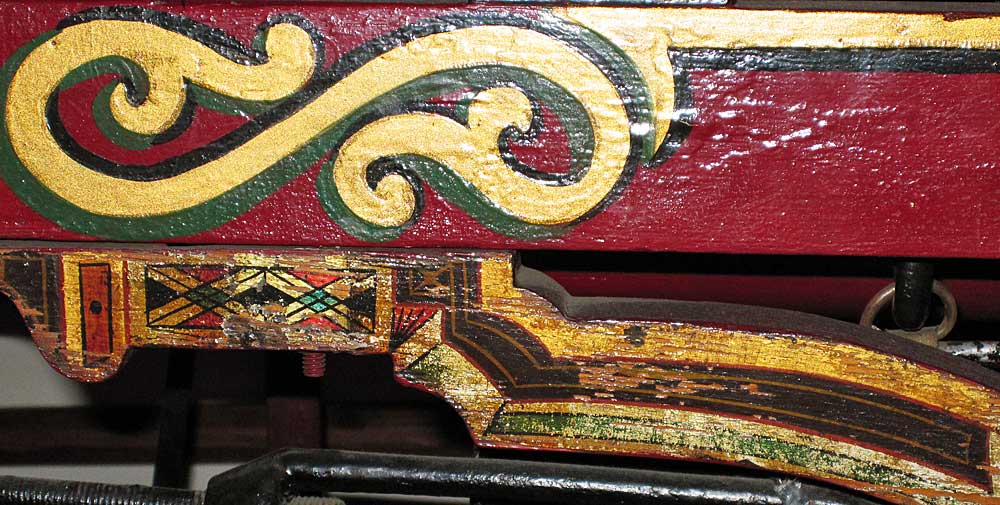
In the photo above, the top scroll is a repaint while the lower decoration is original. Notice the finer detail and more complex color scheme in the older work. Pin-striping was a good skill to have in the 19th century. Most vehicles had striping and all fire engines had fancy striping. The lower section is gold leaf with transparent green and red on top, along with fine black line-work. The top coat of varnish is yellowing and falling off in places The gold should be glowing, making this wood bracket ethereal.


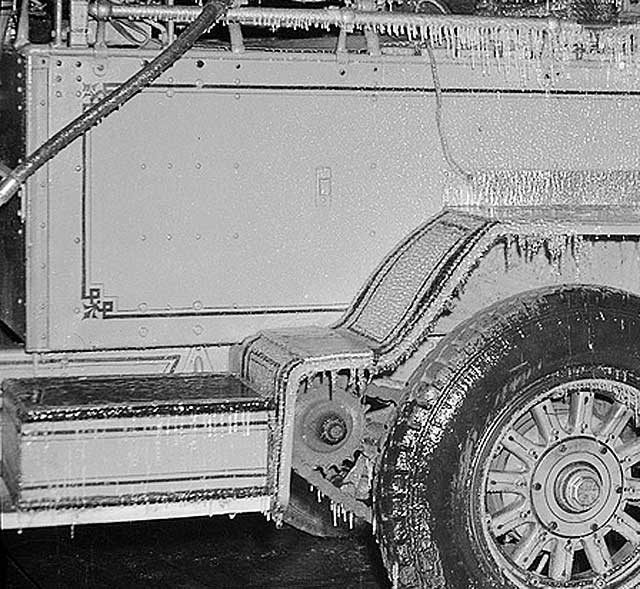
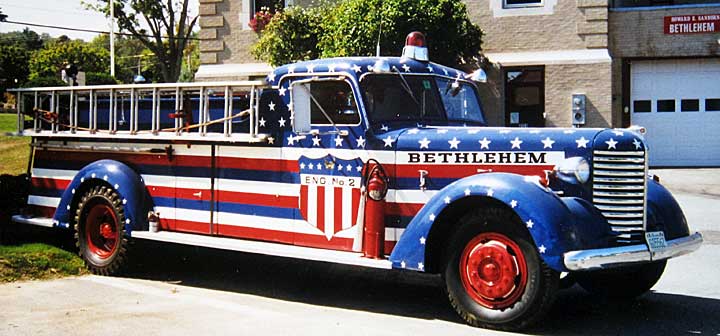
The first decades of hand engine decoration set a standard that lasts to today. Bright colors, gold stripes and heavy Renaissance scrolls remained while popular fashion changed over the years.

